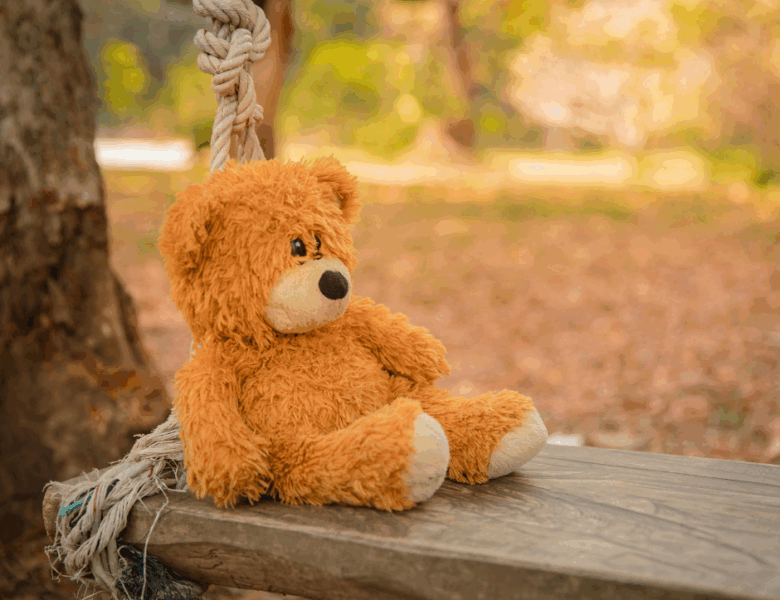The Real Red Flags of Grooming | What Every Parent, Educator, and the Public at Large Needs to Know
August 19, 2025
Child sexual grooming is a complex, deceptive process—one that often masquerades as trust-building or mentorship until it’s far too late. It’s estimated that 1 in 4 girls and 1 in 13 boys have experienced child sexual abuse, and if we, as caregivers, friends, or trusted adults in general, can recognize grooming behaviors, it can help protect the kids in our lives so they can go back to being kids.
One of the biggest issues in child sexual abuse prevention has been working on how to describe to the general public exactly what signs to look for that are concerning, but they tend to have difficulty grappling with how to stop it in part because most people do not know how to define grooming. However, read on to learn how to define grooming, the red flag to look out for, and how you can prevent it to keep kids safe.
Elizabeth L. Jeglic, Ph.D. is a professor of psychology at John Jay College of Criminal Justice and is the nation’s foremost researcher on grooming behaviors. She defines grooming as “the deceptive process in which a perpetrator seeks to facilitate sexual contact with a minor while simultaneously avoiding detection and disclosure.”
Dr. Jeglic has been a recurring guest on our One in Ten podcast to explore the different aspects of her research, including a groundbreaking study she led that was published in Child Abuse & Neglect.

It identified 42 grooming behaviors, many of which appeared innocuous at first glance but were significantly more common in abuse cases.
“I started looking at the behaviors of those who perpetrate sexual violence and what we can do to treat them,” Dr. Jeglic said in the episode titled The Real Red Flags of Grooming published on March 24, 2023. “But then, after I had my children, I recognized there was a disconnect between what we were learning about those who perpetrate sexual violence and then people in the community. And so, I really wanted to focus then on informing individuals about how sexual violence is perpetrated, because there’s a lot of myths and misconceptions out there.”
Looking into the Research
“We wanted to really understand what we could do to prevent sexual abuse before it’s happening,” Dr. Jeglic explains. Most child sexual abuse prevention focuses on what to do after the abuse has already occurred. But by then, the trauma has already happened.
Dr. Jeglic and her team’s research seeks to change that by identifying the pre-offense behaviors—those subtle but telling signs—that often happen before abuse occurs. The research is helping change how we think and talk about prevention, investigation, and survivor support.
To break it all down, here’s what you need to know about grooming:
What Is Grooming?
Dr. Jeglic and her team identified the five different stages of grooming, a calculated process used by perpetrators:
1. Victim selection: “The perpetrator selects somebody who is vulnerable, either because of psychological reasons—they might be lonely or isolated or have psychological or behavioral problems,” Dr. Jeglic said. “Or, because of environmental circumstances, like they don’t have adequate supervision, or their parents aren’t resources for them.”
2. Gain access and isolate: “Depending upon the nature of the perpetrator, that might be working in a youth-serving organization. It may be volunteering someplace, or if it’s a family member or somebody close to the family, they already have access, so that’s a little less necessary. But then, they might isolate them psychologically or physically from their family and friends.”
3. Building trust: “They gain trust with the child and those around them. That’s kind of the crux of the grooming process is this relationship formation. And, that’s often what prevents the disclosure because they select kids who are potentially vulnerable. They give them love and attention and affection, and they find out what they need and they give it to them. And so, this relationship becomes somewhat kind of important to the child.”
4. Desensitization to sexual content and physical contact: “That’s when they start to have those boundary violations, where they start to use sexual language. They start touching the child in non-sexual ways, like hugs, but then it kind of progresses to more and more frequent touches. So, that kind of the boundary gets crossed without the child necessarily recognizing that it’s happened until it’s too late.”
5. Post-abuse maintenance: “Once the abuse has happened, the perpetrator generally either wants to be undetected or wants to continue the abuse. And so, then they use different strategies to prevent the child from telling. Kind of explaining that, this is something they wanted, this is how people show love, that nobody would believe them if they told. Some people might use threats, or they threaten to abandon them, or they would lose the relationship or they use bribes or threats. And so, that’s what kind of prevents people from detecting the abuse and the child from disclosing.”
What Are the Real Red Flags?
Some key red flags that emerged from our conversation with Dr. Jeglic include:
– Unusual favoritism toward a specific child: special gifts, private outings, or excessive attention that sets them apart.
– Overstepping physical boundaries, especially unwanted hugs, back rubs, or “accidental” touching.
– Sexualized jokes or conversations disguised as “education.”
– Watching a child undress or exposing themselves.
– Frequent secrets shared with a child—starting small but escalating.
– Isolation tactics—encouraging the child not to talk to others or mistrusting adults.
– Providing drugs or alcohol to adolescents.
What can we do to prevent grooming?
Dr. Jeglic urges parents, mentors, and professionals to:
– Learn the stages & behavior checklist – have honest talks and share it with your child’s network.
– Watch for patterns – One red flag may not be a concern, but two or three? Take action.
– Educators & Coaches, add safety checks: Integrate grooming red flags into training—put policies in place (like no unsupervised one-on-one time, use cameras, put adults in sight).
– Empower communication – teach children it’s always okay to talk—and adults will listen with trust.
It’s important to remember that lurking beneath seemingly innocent gestures may lay a path to exploitation. By recognizing grooming behaviors and responding early, we can turn red flags into powerful shields for kids.
Help us spread this information. Together, we can help ensure as many people as possible know how to spot grooming—and keep kids safe.
__________________________________________________________
For full details, explore the actual infographic and the 242-page open-access study “Identification of Red Flag Child Sexual Grooming Behaviors” by Jeglic, Winters & Johnson.
Learn more about Dr. Jeglic’s research on grooming behaviors by checking out our One in Ten series page on grooming.







